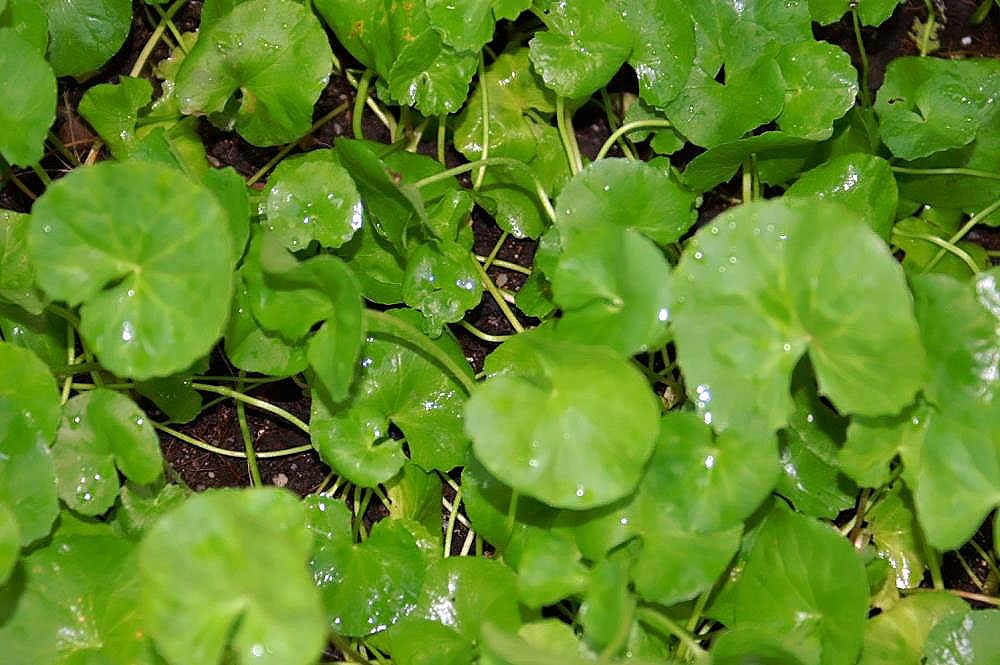
Mandukaparni, scientifically known as Centella asiatica, is a perennial herb that has been revered for its medicinal properties across various cultures for centuries. Known by different names such as Asiatic pennywort in English, Brahma manduki in Hindi, Ondelaga in Kannada, and Mandukaparni in Sanskrit, this herb plays a crucial role in traditional medicine systems worldwide. It is found across a wide geographical range including India, Sri Lanka, China, Australia, Indonesia, and Malaysia. Its cultivation is particularly recommended for its ability to prevent surface run-off on slopes, making it a practical choice for soil conservation and erosion control efforts.
Growth Habit and Economic Importance
Mandukaparni is a small, glabrous trailing herb that roots at the nodes, making it easy to propagate and cultivate. The entire herb, from its leaves to its stems, holds economic value due to its rich medicinal content.
Medicinal Uses of Mandukaparni
-
Nervine Tonic: Enhances memory and cognitive function.
-
Mental Disorders: Used in the treatment of anxiety, depression, and insomnia.
-
Diuretic: Promotes urine flow, aiding in detoxification.
-
Digestive Aid: Improves digestion and acts as a stomachic.
-
Anti-leprosy: Contains properties beneficial for treating leprosy.
-
Antipyretic: Helps in reducing fever.
-
Skin Disorders: Used externally for treating skin conditions.
-
Respiratory Conditions: Traditional remedy for asthma and bronchitis.
Herbal Preparations
-
Centella Fresh Juice: Extracted directly from the herb for immediate consumption.
-
Centella Churna (Powder): Ground herb used in various formulations.
-
Chutney: Blended with other herbs and spices for culinary and medicinal use.
-
Green Salad: Fresh leaves added raw to salads for nutritional benefits.
Mandukaparni's versatility in herbal preparations makes it a popular choice not only in traditional medicine but also in modern herbal remedies and culinary practices.
Mandukaparni: Cultivation Practices
-
Varieties: Several cultivated varieties of Mandukaparni exist, each adapted to specific environmental conditions and cultivation practices. Popular varieties include Arka Divya, Arka Prabhavi, Kayakriti, Majjaposhak, and Vallabh Medha.
-
Climate and Soil Requirements: Mandukaparni thrives in tropical and subtropical climates with mild temperatures and partial shade. It prefers well-drained, acidic soils rich in organic matter, which retain moisture effectively. Clayey soils are particularly suitable for its cultivation.
-
Propagation and Planting: The herb is propagated through rooted suckers, with approximately 200 kg (110,000 propagules per hectare) required for optimal establishment. Planting involves 7-10 cm long cuttings with 3-4 nodes, spaced at 30 x 30 cm intervals in the main field. Planting during the onset of the monsoon ensures optimal growth conditions.
-
Manuring and Maintenance: To sustain vigorous growth, Mandukaparni requires nutrient-rich soil. Farmers typically apply 20 tonnes of Farm Yard Manure (FYM) per hectare initially, with an additional 5 tonnes of FYM added after each harvest cycle to replenish soil nutrients.
-
Harvesting and Yield: The first harvest is usually conducted around 5 months after planting, with subsequent harvests occurring at 3-month intervals. On average, one hectare of cultivated area yields approximately 5500 kg of fresh herb, 2000 kg of dried herb, and around 20 kg of asiaticoside, a key bioactive compound prized for its medicinal properties.
Market and Economic Value
Mandukaparni commands a significant market price, averaging Rs 97 per kilogram for the whole herb. Its increasing demand in the herbal and pharmaceutical industries underscores its economic importance. The herb's sustainable cultivation practices and broad medicinal applications continue to drive its popularity among consumers and researchers alike.
Mandukaparni exemplifies the profound synergy between traditional wisdom and modern scientific validation in herbal medicine. Its versatile medicinal properties, coupled with its economic viability, make it a valuable asset for sustainable agriculture and holistic healthcare. As cultivation practices evolve and awareness of its benefits spreads, Mandukaparni holds promise for enhancing both agricultural productivity and public health outcomes worldwide.
















